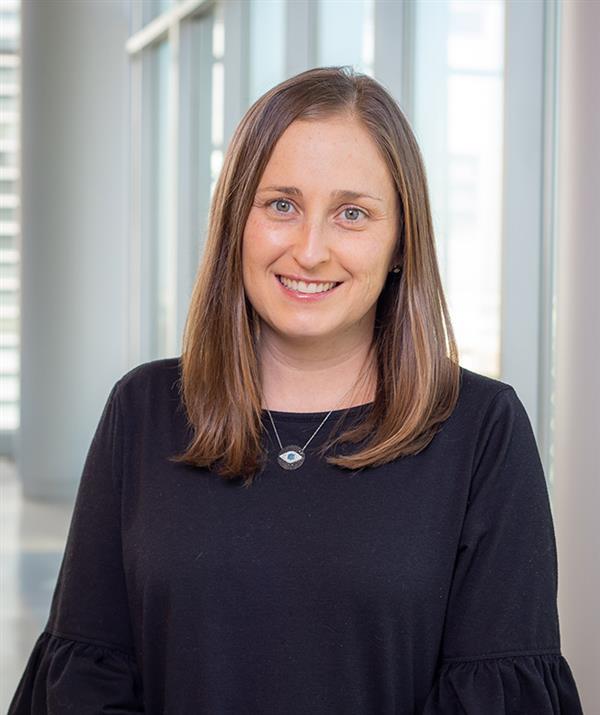- Doctors & Departments
-
Conditions & Advice
- Overview
- Conditions and Symptoms
- Symptom Checker
- Parent Resources
- The Connection Journey
- Calm A Crying Baby
- Sports Articles
- Dosage Tables
- Baby Guide
-
Your Visit
- Overview
- Prepare for Your Visit
- Your Overnight Stay
- Send a Cheer Card
- Family and Patient Resources
- Patient Cost Estimate
- Insurance and Financial Resources
- Online Bill Pay
- Medical Records
- Policies and Procedures
- We Ask Because We Care
Click to find the locations nearest youFind locations by region
See all locations -
Community
- Overview
- Addressing the Youth Mental Health Crisis
- Calendar of Events
- Child Health Advocacy
- Community Health
- Community Partners
- Corporate Relations
- Global Health
- Patient Advocacy
- Patient Stories
- Pediatric Affiliations
- Support Children’s Colorado
- Specialty Outreach Clinics
Your Support Matters
Upcoming Events
Colorado Hospitals Substance Exposed Newborn Quality Improvement Collaborative CHoSEN Conference (Hybrid)
Monday, April 29, 2024The CHoSEN Collaborative is an effort to increase consistency in...
-
Research & Innovation
- Overview
- Pediatric Clinical Trials
- Q: Pediatric Health Advances
- Discoveries and Milestones
- Training and Internships
- Academic Affiliation
- Investigator Resources
- Funding Opportunities
- Center For Innovation
- Support Our Research
- Research Areas

It starts with a Q:
For the latest cutting-edge research, innovative collaborations and remarkable discoveries in child health, read stories from across all our areas of study in Q: Advances and Answers in Pediatric Health.


Pediatric Eye Conditions We Treat
At Children’s Hospital Colorado, we treat the big things, the small things and everything in between.
At Children's Hospital Colorado, pediatric ophthalmologists treat a wide range of common and complex childhood eye conditions, including the ones listed below.
Amblyopia (lazy eye)
Amblyopia, or lazy eye, is reduced vision in an eye that has not received adequate use during early childhood. This condition has many causes. It can result from a misalignment of a child's eyes, such as crossed eyes, a difference in visual acuity between the two eyes, or due to obstruction of vision such as a cataract. One eye becomes stronger, suppressing the development of vision of the other eye. If uncorrected at the right time in childhood, amblyopia can result in permanent vision loss.
Astigmatism
Astigmatism is blurred vision caused by an irregularly shaped cornea (corneal astigmatism) or lens (lenticular astigmatism). The irregular shaped cornea or lens causes light to focus on more than one point in the eye causing the vision to be blurry. Astigmatism can usually be corrected with eyeglasses, contact lenses, or surgery. Depending on the degree of astigmatism, glasses or contacts may be needed at an early age to ensure that normal vision development takes place, and amblyopia (lazy eye) is avoided. Very high astigmatism could be a concern for other ocular conditions such as keratoconus.
Cataract
A cataract is a cloudy area in the lens. The lens is made up of mostly water and protein. Protein can sometimes clump together to cloud an area of the lens and blur vision. In very young children, surgical removal of the cataract offers the best solution for preserving vision. Because of the size of the lens and an increased inflammatory response in kids, children with cataracts are best treated by a pediatric eye specialist.
Cellulitis
Cellulitis is an inflammation or infection of the eyelids, orbit (eye socket) and surrounding tissues. There are two types of cellulitis of the eye: preseptal and orbital cellulitis. Preseptal cellulitis is when the eyelids are involved and can be treated with oral antibiotics. Orbital cellulitis is when the orbit is involved, which is more serious and can lead to vision loss. Orbital cellulitis may require hospital admission, antibiotics and possibly surgery. Sometimes it is difficult to determine the difference between the two types and may require imaging studies. Orbital cellulitis should be evaluated by an ophthalmologist.
Chalazion (stye)
Styes are acute inflammation from clogged oil glands in the eyelids caused by the oil backing up into the eyelid skin. In rare cases, this can also cause a more serious infection. Styes usually develop over a few days and may drain spontaneously and heal. The leftover oil and white blood cells may leave behind a chronic lipogranuloma, called a chalazion. Most chalazia will resolve on their own, but sometimes this may require medication or a procedure.
Conjunctivitis (pink eye)
Conjunctivitis, or pink eye, is the inflammation of the conjunctiva, or the clear mucus membrane on the eye. There are many causes of conjunctivitis such as allergic, bacterial and viral. Most causes of conjunctivitis require medication or eye drops for treatment.
Diplopia
Diplopia means double vision or seeing two images simultaneously. Sometimes a patient may experience double vision when their eyes are not aligned, also referred to as strabismus. This tends to be more common in patients who had straight eyes before that become misaligned later in life. Diplopia is more common in adults than in children. The cause of diplopia requires the evaluation of a pediatric ophthalmologist and may require surgical intervention.
Esotropia (crossed eyes)
Esotropia is a condition in which one or both eyes turn inward. Young children with esotropia do not use their eyes together. In most cases, early surgery is needed to correct the misalignment and prevent vision loss, and many children will require glasses and eye patching. Esotropia is not normal after about 3 or 4 months of age and needs to be evaluated and treated by a pediatric eye specialist.
Exotropia (wall eyes)
Exotropia is a condition in which one or both eyes turn outward. Although glasses or eye muscle exercises may help control or reduce the outward turning eye, surgery is often needed to correct exotropia and prevent permanent vision loss.
Glaucoma
Although glaucoma is commonly associated with older adults, in children it is much more serious and more difficult to treat. Glaucoma, which occurs in one in 10,000 children, is caused by an elevation in pressure inside the eye that results from a buildup of excess fluid. Most adults develop the condition as their eyes change with age or as a response to trauma, but glaucoma in children occurs because their eyes did not form normally in their mother's womb. Nearly all children need one or more surgeries for this condition. Children with this condition will require close monitoring throughout their childhood.
Genetic diseases of the eye
Genetic diseases are inherited. Many eye diseases have a genetic component and many genetic diseases and birth defects can affect vision. Congenital cataracts (cataracts present at birth), pediatric glaucoma and retinal degenerations, such as retinitis pigmentosa, are common eye diseases with a genetic link.
Hyperopia (farsightedness)
Hyperopia, or farsightedness, is a common vision problem. People with hyperopia can see distant objects very well, but have difficulty seeing objects that are up close. The eyeball of a farsighted person is shorter than normal. Many children are born with hyperopia, and some of them outgrow it as the eyeball lengthens with normal growth. Childhood hyperopia is a common cause of crossed eyes (esotropia). Depending on the degree of hyperopia, glasses or contacts may be needed at an early age to ensure that normal vision development takes place and amblyopia is avoided.
Keratoconus
Keratoconus is an ocular condition in which the cornea becomes thin and gradually becomes cone-shaped. This results in high astigmatism and blurred vision. Advanced keratoconus can also result in corneal scarring leading to permanent vision loss. When detected early, the progression of keratoconus can be reduced by cornea crosslinking. In advanced keratoconus, a child may require surgery, which can include a cornea transplant. Learn how we treat keratoconus with a procedure called corneal collagen cross-linking.
Myopia (nearsightedness)
Nearsightedness, or myopia, is a common vision problem. Children with nearsightedness see close objects very well, but have difficulty seeing objects at a distance. The eyeball of a nearsighted person is slightly longer than usual from front to back. Depending on the degree of myopia, glasses or contacts may be needed at an early age to ensure that normal vision development takes place, and amblyopia is avoided. Myopia that is advancing quickly can be reduced with medical treatments such as drops or special contacts.
Nasolacrimal duct obstruction (teary eyes)
Nasolacrimal duct obstruction is a common condition in which tear drainage to the nasolacrimal duct is partially or fully blocked from birth. Tears, mucous, and bacteria are not cleared from the eye in this condition. Most of the time, this condition will resolve by 1 year of age. If the condition doesn't resolve, your child may require a simple surgical procedure to correct it. Occasionally children need more than one surgery.
Nystagmus
Nystagmus is a rapid, shaking of the eyes. This can happen horizontally or vertically. There are several different types and causes of nystagmus. The condition starts from birth or can be due to another eye disease such as cataracts, vision loss or a hereditary ocular disease. Nystagmus can result in reduced vision. Some patients with nystagmus may also have a head turn or tilt in order to see better (also called a null point). Children with nystagmus may require glasses to improve vision or eye muscle surgery to help with their head position. All patients with nystagmus should have an evaluation by an ophthalmologist.
Ptosis (drooping eyelids)
Ptosis (pronounced toe-sis) is the medical term for drooping eyelids. In some cases, the sagging upper eyelid can result in a loss of vision by covering the visual axis. Many children with ptosis will need glasses, patching or surgery to treat and prevent amblyopia from the ptosis. Ptosis repair can be done by a pediatric ophthalmologist or an oculoplastic surgeon.
Retinoblastoma
Retinoblastoma is a malignant tumor inside the eye. It grows from the retina, which is a structure important for vision in the back part of the eye, behind the pupil. Retinoblastoma is the most common primary eye tumor in children and can affect one or both eyes. Prior to the development of the current treatments, retinoblastoma was unfortunately nearly universally fatal. Today, however, with improved chemotherapies and other new treatment strategies, the survival rate of children with retinoblastoma in the United States is over 95%. Learn more about our multidisciplinary Retinoblastoma Program and the state-of-the-art treatment protocols they offer.
Retinopathy of prematurity
Retinopathy of prematurity (ROP) is the abnormal growth of blood vessels within the retina and vitreous that occurs in some premature infants. Typically, the smallest and earliest premature babies are at the highest risk for developing ROP. The severity of ROP varies, ranging from nearly normal vision to total blindness. This condition requires very close monitoring and sometimes surgery.
Strabismus
Strabismus involves deviation of the alignment of one eye in relation to the other. Strabismus is caused by a lack of coordination between the eyes. As a result, the eyes look in different directions and do not focus simultaneously on a single point. In children, the brain may learn to ignore the input from the misaligned eye. If this continues, the eye that the brain ignores will never see well. This loss of vision is called amblyopia and it is frequently associated with strabismus. Types of strabismus include esotropia and exotropia.
Adult strabismus
Adults can have misaligned eyes as well. Sometimes it has been present from childhood, and other times it can start suddenly. Sudden double vision should be evaluated by your primary care provider, because it may be caused by a condition in the brain and require quick evaluation and treatment. Your ophthalmologist should also evaluate this and may recommend an evaluation by a pediatric ophthalmologist at Children’s Hospital Colorado for prism treatment or surgery. Many adults can be helped with their double vision and with their eye appearance by strabismus surgery.
Trauma to the eye
Eye trauma refers to any injury to the eye. It is a regular event in children and a common cause of loss of vision. Typical causes of eye trauma include sports, chemicals, sharp toys and fingernails. You should consider any eye trauma a medical emergency and seek immediate medical care.
Uveitis
Uveitis is an abnormal inflammatory response inside the eye. Signs and symptoms include redness, pain and blurred vision. This condition can affect children of all ages, as well as adults. Most causes of uveitis are infection, injury or an autoimmune disease. Sometimes the cause of the uveitis cannot be determined. We treat uveitis with medication and sometimes surgery. Without treatment, uveitis can result in permanent vision loss. Learn more about our uveitis clinic.
Get to know our pediatric experts.

Robert Enzenauer, MD
Ophthalmology

Rebecca Braverman, MD
Ophthalmology

Emily McCourt, MD
Ophthalmology

Jennifer Jung, MD
Ophthalmology

Looking for a second opinion?
Eye care is important to get right. If your child is having vision problems and you're not getting the right answers, contact one of our pediatric eye specialists for a second opinion.
Request a second opinion from our Department of Pediatric Ophthalmology



 720-777-0123
720-777-0123



